The Catalyst Killing - [13]
I guided her out of the room, and closed the door. Then, for the first time in this investigation, I dialled Patricia’s number from my office. I had a strong feeling that she would be able to think of some questions that I had failed to ask the witness.
XII
As I suspected, Patricia was sitting at the ready. She picked up the phone after the first ring and listened with almost devout concentration to my summary of the blind witness’s account. Not unexpectedly, her response was quick when I asked if there was anything she would like me to ask the witness.
‘I have two simple but very important questions for your ear-witness. First of all, did she hear the sound of the train when Marie Morgenstierne broke into a run? And second, did the person shout Marie’s name just before, just after or at exactly the same time as Marie Morgenstierne started to run?’
I jotted the questions down without understanding their significance. I then asked Patricia if we could postpone our planned supper until seven, as I still had to take down several important statements.
‘Why not say half past seven, to be on the safe side. You can tell me the answers to my questions then, and anything else that you might think is of interest. And ask for the appeal for witnesses to be broadcast again. It would be both interesting and alarming, to say the least, if none of the other three people who were on the road yesterday evening came forward.’
I agreed, and promised to be there at half past seven. Then I put down the phone and called in the witness again.
Aase Johansen listened intently to my questions and then answered them as quickly and concisely as she could.
She had not heard any noise from the train at the point when Marie Morgenstierne started to run. She had, however, heard it approaching about thirty seconds later, when most of the other confusing sounds had died down.
In answer to the second question, she said that the person had shouted ‘Marie’ at about the same time that Marie Morgenstierne had suddenly accelerated from a walk to a run. It was possible that she had heard one or two fast steps before the shout, but she registered them at the same time.
I noted down her address and telephone number in the event of any further questions, and then accompanied her and her dog out of the building and paid for a taxi to take them home. She beamed and thanked me for this, and wished me luck with the rest of the investigation. It felt good finally to meet a helpful and obviously truthful person on what had otherwise been a very demanding day so far.
XIII
It was half past three by the time I stood alone on the pavement and watched the blind witness and her guide dog disappear in a taxi. I still had three important meetings, the first with Falko Reinhardt’s parents, the second with Miriam Filtvedt Bentsen, and finally with Marie Morgenstierne’s father. If her reputation was anything to go by, the former would still be in the university library, whereas Falko Reinhardt’s parents had said they were always at home. So I drove to see them first.
I had found the right address in Seilduk Street by a quarter to four. It was earlier than agreed, but the door was opened promptly all the same when I rang the bell.
Astrid Reinhardt had silver-grey hair, but was still a vigorous woman in her mid-sixties. She said she had seen me from the window. Her husband was not far behind her in the hallway. He greeted me with a noticeable accent, but otherwise in almost perfect Norwegian. One of the advantages of being a Dutchman was that it was easy to learn Norwegian, he commented with a shadow of a smile.
Meeting Falko Reinhardt’s parents in the hallway was less of a shock than entering their living room a few seconds later. I had heard that Falko Reinhardt was an only child and that his father was a photographer, but still obviously lacked the imagination to anticipate what was waiting there.
There were a couple of bookshelves, but otherwise, three of the four walls were so full of photographs that it was hard to tell whether the wall behind was painted or papered. Falko Reinhardt was in every single picture that I could see. If you followed the walls from the door, you followed his journey from babe in arms to bearded adult in hundreds of photographs.
The first picture, dated 1 June 1945 in felt tip, was a simple photo of his parents smiling broadly amongst all the Norwegian flags down at Oslo harbour, holding their oblivious baby in their arms. Arno Reinhardt was younger, darker and happier, but easily recognizable. His left hand was entwined with his wife’s, and in his right arm he held their son triumphantly up to the camera.
The Reinhardts looked on with something akin to devotion as I studied the photograph, fascinated. Mrs Reinhardt was the first to speak.
‘It was a beautiful, sunny day. We happened to be on the same ship as the prime minister and president of the Storting when they returned from London to the newly liberated Norway. Only three years earlier, Arno and I had thought we would never return to Oslo, let alone come home with a child.’
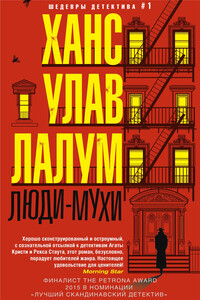
Убит бывший лидер норвежского Сопротивления и бывший член кабинета министров Харальд Олесен. Его тело обнаружено в запертой квартире, следов взлома нет, орудие убийства отсутствует. На звук выстрела к двери Олесена сбежались все соседи, но никого не увидели. Инспектор уголовного розыска Колбьёрн Кристиансен считает, что убийство, скорее всего, совершил кто-то из них. Более того, он полагает, что их показания лживы.
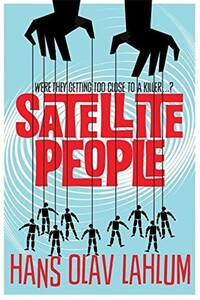
A gripping, evocative, and ingenious mystery which pays homage to Agatha Christie, Satellite People is the second Norwegian mystery in Hans Olav Lahlum's series. Oslo, 1969: When a wealthy man collapses and dies during a dinner party, Norwegian Police Inspector Kolbjorn Kristiansen, known as K2, is left shaken. For the victim, Magdalon Schelderup, a multimillionaire businessman and former resistance fighter, had contacted him only the day before, fearing for his life. It soon becomes clear that every one of Schelderup's 10 dinner guests is a suspect in the case.
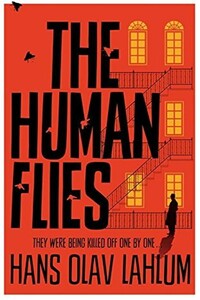
Oslo, 1968: ambitious young detective Inspector Kolbjorn Kristiansen is called to an apartment block, where a man has been found murdered. The victim, Harald Olesen, was a legendary hero of the Resistance during the Nazi occupation, and at first it is difficult to imagine who could have wanted him dead. But as Detective Inspector Kolbjorn Kristiansen (known as K2) begins to investigate, it seems clear that the murderer could only be one of Olesen's fellow tenants in the building. Soon, with the help of Patricia – a brilliant young woman confined to a wheelchair following a terrible accident – K2 will begin to untangle the web of lies surrounding Olesen's neighbors; each of whom, it seems, had their own reasons for wanting Olesen dead.
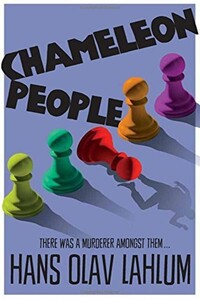
From the international bestselling author, Hans Olav Lahlum, comes Chameleon People, the fourth murder mystery in the K2 and Patricia series.1972. On a cold March morning the weekend peace is broken when a frantic young cyclist rings on Inspector Kolbjorn 'K2' Kristiansen's doorbell, desperate to speak to the detective.Compelled to help, K2 lets the boy inside, only to discover that he is being pursued by K2's colleagues in the Oslo police. A bloody knife is quickly found in the young man's pocket: a knife that matches the stab wounds of a politician murdered just a few streets away.The evidence seems clear-cut, and the arrest couldn't be easier.
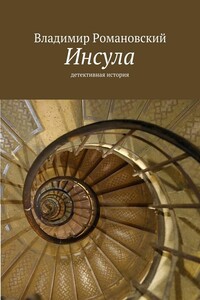
Детективная история, произошедшая в Санкт-Петербурге. Обычные люди в необычных обстоятельствах. Любовь, ненависть, жадность, драки и власть.
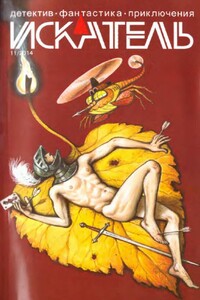
«ИСКАТЕЛЬ» — советский и российский литературный альманах. Издаётся с 1961 года. Публикует фантастические, приключенческие, детективные, военно-патриотические произведения, научно-популярные очерки и статьи. В 1961–1996 годах — литературное приложение к журналу «Вокруг света», с 1996 года — независимое издание.В 1961–1996 годах выходил шесть раз в год, в 1997–2002 годах — ежемесячно; с 2003 года выходит непериодически.Содержание:Анатолий Королев ПОЛИЦЕЙСКИЙ (повесть)Олег Быстров УКРАДИ МОЮ ЖИЗНЬ (окончание) (повесть)Владимир Лебедев ГОСТИ ИЗ НИОТКУДА.
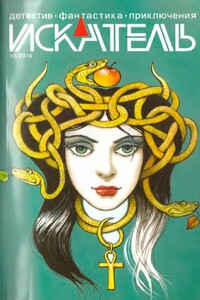
«ИСКАТЕЛЬ» — советский и российский литературный альманах. Издается с 1961 года. Публикует фантастические, приключенческие, детективные, военно-патриотические произведения, научно-популярные очерки и статьи. В 1961–1996 годах — литературное приложение к журналу «Вокруг света», с 1996 года — независимое издание.В 1961–1996 годах выходил шесть раз в год, в 1997–2002 годах — ежемесячно; с 2003 года выходит непериодически.Содержание:Олег Быстров УКРАДИ МОЮ ЖИЗНЬ (повесть);Петр Любестовский КЛЕТКА ДЛЯ НУТРИИ (повесть)
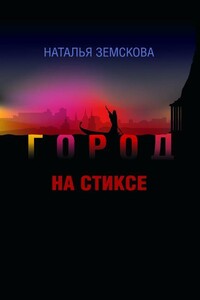
Наталья Земскова — журналист, театральный критик. В 2010 г. в издательстве «Астрель» (Санкт-Петербург) вышел её роман «Детородный возраст», который выдержал несколько переизданий. Остросюжетный роман «Город на Стиксе» — вторая книга писательницы. Молодая героиня, мечтает выйти замуж и уехать из забитого новостройками областного центра. Но вот у неё на глазах оживают тайны и легенды большого губернского города в центре России, судьбы талантливых людей, живущих рядом с нею. Роман «Город на Стиксе» — о выборе художника — провинция или столица? О том, чем рано или поздно приходится расплачиваться современному человеку, не верящему ни в Бога, ни в черта, а только в свой дар — за каждый неверный шаг.
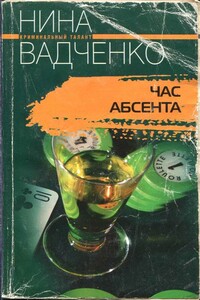
А ведь все так невинно начиналось! Четыре подружки коротали вечерок с бутылочкой «зеленого дьявола» и вели милую дамскую беседу о том… как бы им «грамотно» отправить на тот свет ненавистного шефа. Почему бы не помечтать о приятном в теплой дружеской компании? Все бы ничего, да только шефа вскоре действительно нашли мертвым, к тому же кто-то снял на видео посиделки четырех любительниц абсента. Впрочем, они и сами друг друга теперь подозревают. И распутать этот клубок противоречий по силам только их старой знакомой, неугомонной журналистке Инне Пономаренко…
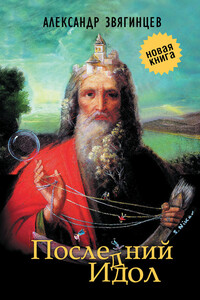
В сборник «Последний идол» вошли произведения Александра Звягинцева разных лет и разных жанров. Они объединены общей темой исторической памяти и личной ответственности человека в схватке со злом, которое порой предстает в самых неожиданных обличиях. Публикуются рассказы из циклов о делах следователей Багринцева и Северина, прокуроров Ольгина и Шип — уже известных читателям по сборнику Звягинцева «Кто-то из вас должен умереть!» (2012). Впервые увидит свет пьеса «Последний идол», а также цикл очерков писателя о событиях вокруг значительных фигур общественной и политической жизни России XIX–XX веков — от Петра Столыпина до Солженицына, от Александра Керенского до Льва Шейнина.